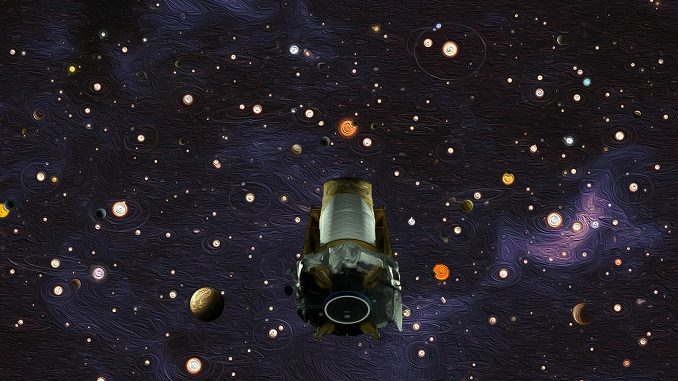
After nearly a decade spent scanning space and making countless discoveries, NASA’s Kepler Space Telescope officially retired after running out of fuel about 64 million miles from Earth.
According to NASA, some of the space telescope’s main accomplishments include its 9.6 years spent in space observing more than 530,500 stars, documenting 61 supernovae and discovering 2,662 new planets. The U.S. space agency says that many of these planets discovered by the Kepler “could be promising places for life.”
NASA says it has chosen to retire the spacecraft as it maintains its “current, safe orbit, away from Earth.”
“As NASA’s first planet-hunting mission, Kepler has wildly exceeded all our expectations and paved the way for our exploration and search for life in the solar system and beyond,” Thomas Zurbuchen, associate administrator of NASA’s Science Mission Directorate, said in a news release.
“Not only did it show us how many planets could be out there, it sparked an entirely new and robust field of research that has taken the science community by storm. Its discoveries have shed a new light on our place in the universe, and illuminated the tantalizing mysteries and possibilities among the stars.”
Other Kepler findings touted by the space agency include the discovery that 20 to 50 percent of visible stars are likely to have “small, possibly rocky, planets similar in size to Earth” located in the habitable zones of their parent stars.
The space telescope launched back in 2009 with the main goal of finding how common planets outside of Earth’s solar system are. NASA said that the Kepler was able to discover these new planets by staring at a single patch of the sky and then detecting a drop in its brightness.
A drop in brightness can indicate that a planet passed in front of the star being observed by the Kepler. In all, NASA says Kepler’s discoveries have them believing there could be at least one planet orbiting every single star in the sky.
“When we started conceiving this mission 35 years ago we didn’t know of a single planet outside our solar system,” William Borucki, the founding principal investigator for the Kepler team, said in the release.
“Now that we know planets are everywhere, Kepler has set us on a new course that’s full of promise for future generations to explore our galaxy.”
In terms of planet-hunting news, NASA launched its Transiting Exoplanet Survey Satellite in August of this year. The planet-hunting satellite will fly in an orbit that “completes two circuits around Earth every time the Moon orbits once.”
The space agency says this unique orbit will allow the satellite’s cameras to monitor each patch of sky continuously for as long as a month at a time.
The TESS mission is expected to create a database of thousands of new planet candidates that could increase the space agency’s current figure of exoplanets. NASA says the mission will last for two years, and that it will use its four unique wide-field cameras to map 85 percent of the sky.




Be the first to comment